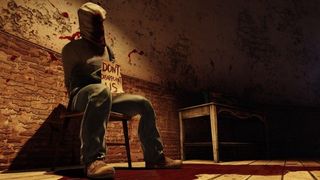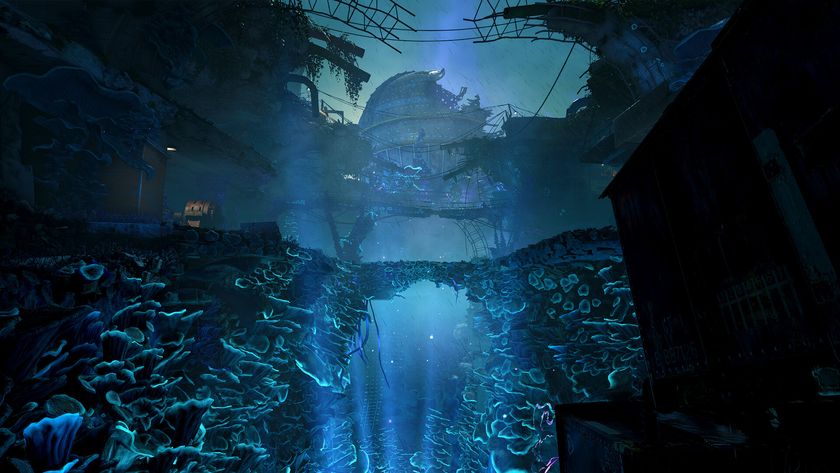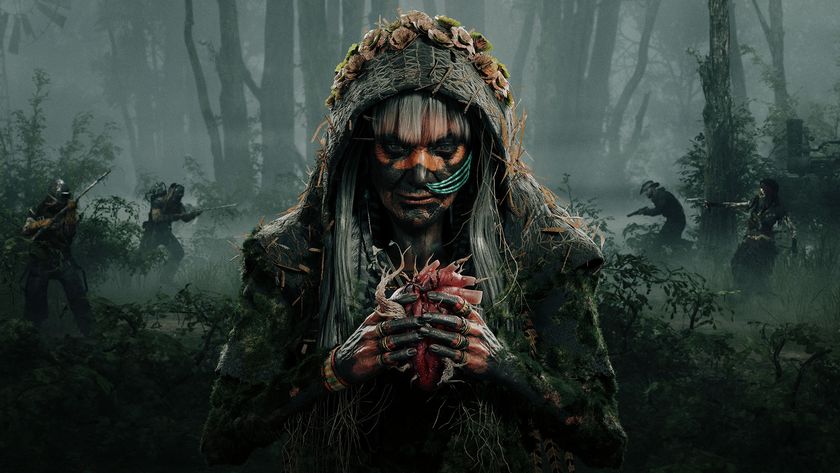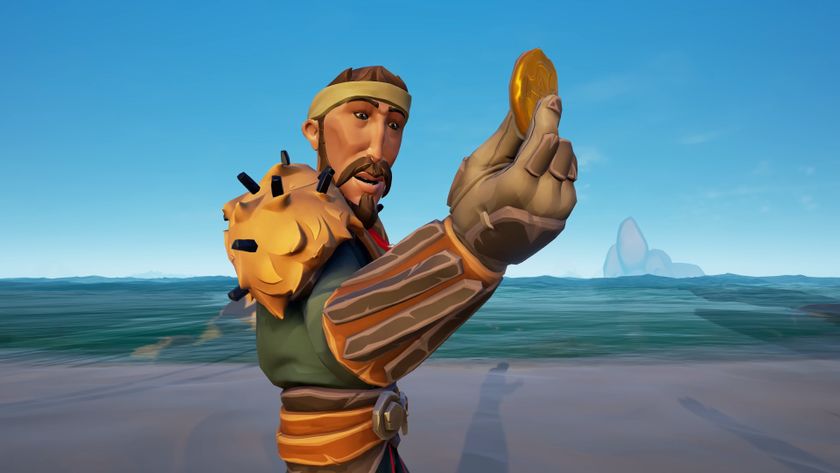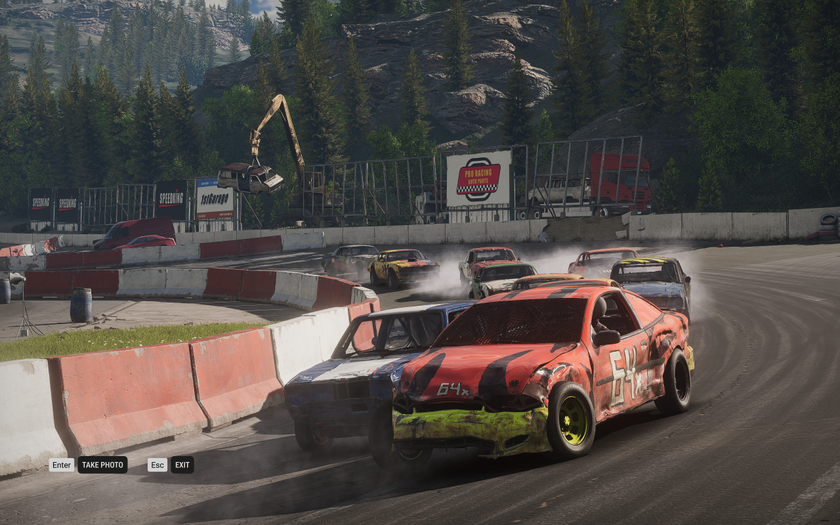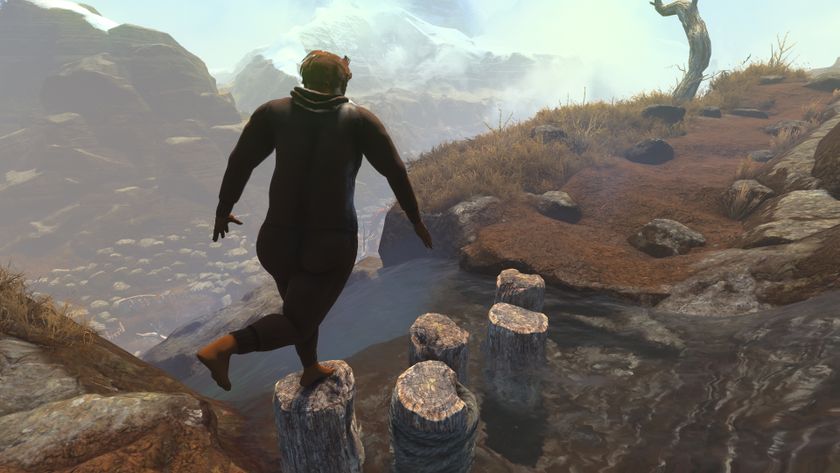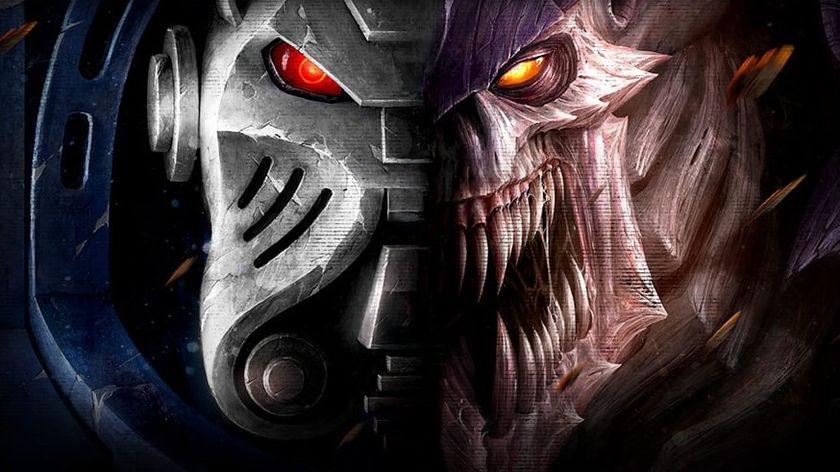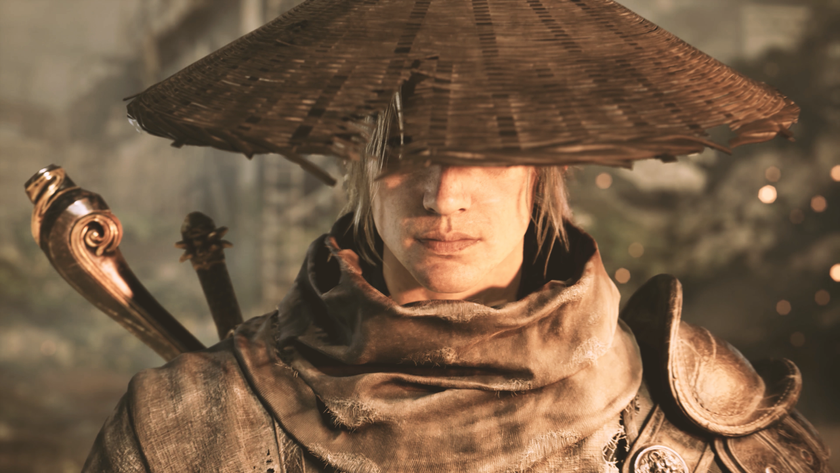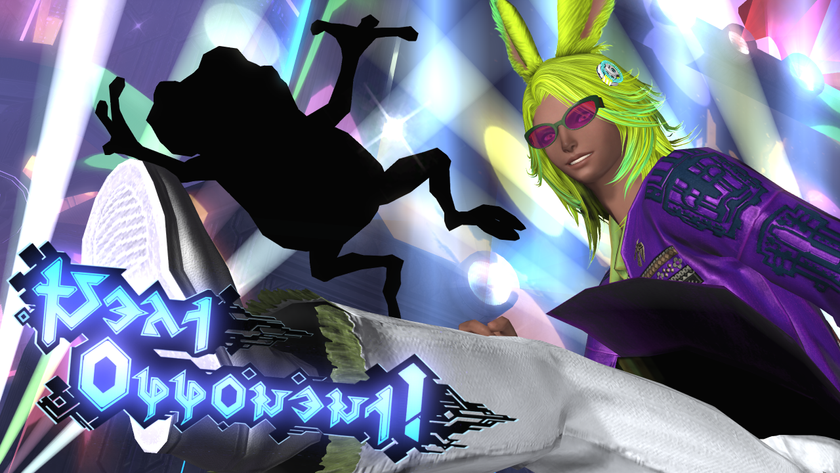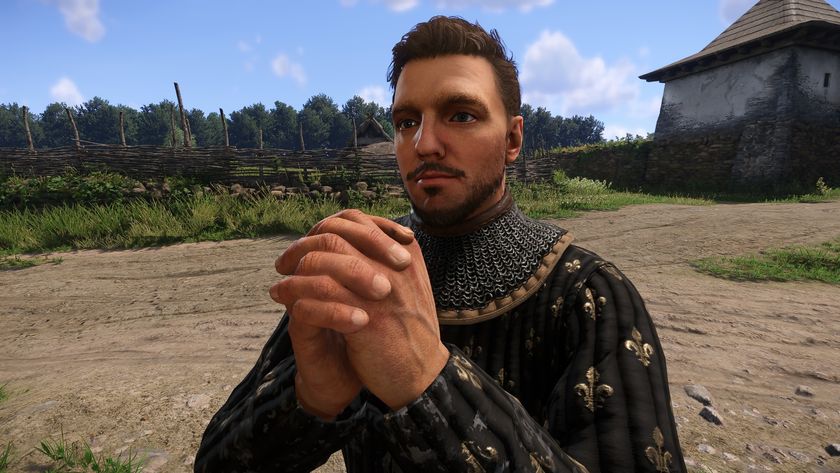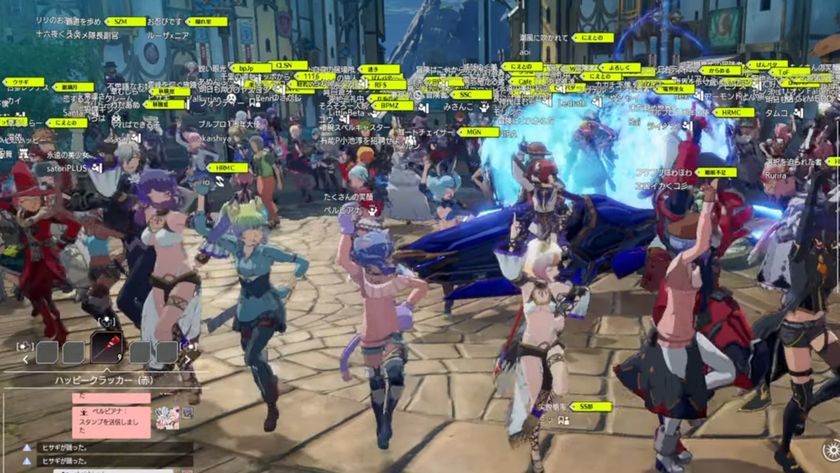BioShock Infinite hands-on: five hours in cloud city
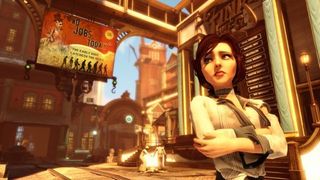
It's a very story-driven game – you're always heading to an excitingly new part of the city with a specific purpose. As far as I played, it never lapses into a formula, which gives it a sense of adventure and discovery that BioShock didn't always have. And the places it takes you to are what really made me fall in love with it.
"You're always heading to an excitingly new part of the city. It never lapses into a formula."
I'm in a temple. Soulful gospel music echoes through the dark halls as I wade through knee-deep holy water. Spectacular statues sparkle in shafts of sunlight. A preacher's speech to his damp-robed congregation crosses the line from passionate to unhinged.
I'm on a beach. There's actual sand, and an ocean of sorts. I can still see Columbia in the sky... and after a moment I realise I'm still in Columbia. The ocean runs off the edge of this district in a vast, Niagara-style waterfall.
I'm in an exhibit, of sorts. A huge statue of Columbia's first lady catches beams of brilliant pink light, as plaques tell the story of her life. In the next room, a spectacular diorama has larger-than-life statues of dozens of soldiers tumbling off a cliff, a frozen snapshot of a massacre, shrill opera music blaring out of bad speakers to underscore the unmoving drama.
I'm in a mansion, old and gloomy. Stairs lead up. A banquet hall is to the left, and I see what looks like a butler in there. He's facing the wall. I walk around to get his attention, but he just stares blankly. I look at the table. It's piled with rotting food, and there are crows everywhere.

Even taking it slowly, these new places come at a rate and a density of detail that feels like sensory overload. Each one has that depth of story I described earlier: dozens of clues and hints and references and traces of people's lives and stories. And each one has an extraordinary visual design that makes you stop and gawp.
Most of them, of course, are also battlegrounds. At first, I didn't think much of Infinite's combat. Not just its videogameyness in a world that's otherwise so real; I also felt like I didn't have a lot of options, and you're fighting a crazy number of soldiers and turrets. There doesn't seem to be a good way to avoid getting hit.
The biggest gaming news, reviews and hardware deals
Keep up to date with the most important stories and the best deals, as picked by the PC Gamer team.
"Taking cover gets you cornered. Hooking onto a skyrail and going full throttle makes you too fast to track."
It gets better when skyrails are introduced. Steel tracks worm their way through the plentiful empty space in Columbia, and your sky hook lets you launch yourself onto them and ride them like a rollercoaster. That, ultimately, is how you avoid getting hit. Taking cover usually just gets you cornered by someone you can't take on at close range, but hooking onto a skyrail and going full throttle makes you too fast to track.
From there, you can aim a jump to any of the various platforms and vantage points, pounce on an enemy with lethal force, or just stay on the rail until it loops around, to get an overview of the war zone.
Your set of abilities expands gradually, and the spaces you're fighting in get bigger and have more interesting stuff going on in them. So to get a sense of how it scales up, I asked to play a late-game fight.
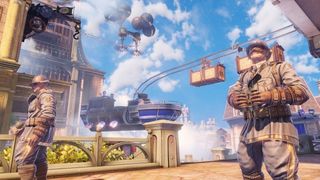
The first thing I do is hop on a skyrail and take a tour: a bunch of heavily armoured soldiers are shooting at me from a central balcony, some more from a moving airship, and a half-robot giant – a Handyman – is stomping around below.
As I watch, he jumps onto the rail I'm on and sends an electric charge through it, shocking me. I stay on until I'm in a position to pounce on one of the armoured guys on the central balcony. My flying skyhook attack knocks him clear off it, but his partner fights back hard. My shotgun doesn't do much against him, so I try a new ability: Charge. I fly forwards and slam into him with alarming force, and he goes down.
"Elizabeth's most useful ability is to open a 'tear' – a rift in space that brings forth some useful object."
I'm low on health, so I run over to some medkits – or rather, where some medkits could be.
Your companion, Elizabeth, joins you in combat, riding skyrails with you, tossing you ammo, and reviving you when you're down. But her most useful ability is to open a 'tear' – a potential rift in space that brings forth some useful object or feature. You can see all the potential tears in an area in grey fuzzyvision, and 'use' one to ask Elizabeth to make it real. She can only sustain one at a time, and by this point in the game, a big combat space like this has at least eight.
So I ask Elizabeth to open the tear in front of me, grab a medkit from the box that appears, and heal myself. I decide to try another new ability: Undertow. As I hold down the right mouse button, a tendril of water creeps out of my hand, curls around the arena, grabs onto the Handyman and sucks him in front of me. Oh, thanks Undertow!
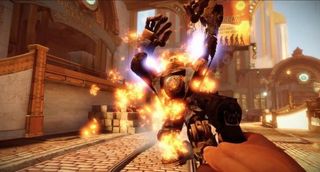
I switch to Shock Jockey and electrocute him while he's wet, then ask Elizabeth to open a nearby tear that brings in a pool of water. I try to lure the Handyman into it in order to shock him again, but he has an annoying habit of jumping directly to me. He's pounding me to oblivion with his articulated fists.
I skyrail over to a high balcony to get away. A tear here handily contains a barrel of rocket launchers, so we open it and I grab one. Another tear has an automated turret, so I tell Elizabeth to open that one before we move on.
"Late-game combat is still hectic, but you've got a lot of options."
The Handyman chases, and is pelted by both the turret and my rockets as I ride away. He grabs the rail in both hands, but I'm wise to it this time: I drop down just before the current shoots through the metal. I hit him with two more rockets as he leaps around the arena, then use Undertow – intentionally this time. A snake of liquid seeks him out and pulls him to me, and holds him in place for a second. I use the time to back up a little, switch to Charge, and hold down the right mouse button. The moment he's free, I slam into him full force, and he crumples.
Late-game combat is still hectic, but you've got a lot of options and they're more satisfying than just shooting dudes with the bog-standard weapons. The constant skyrailing and leaping around make it fast, dramatic and acrobatic to play.
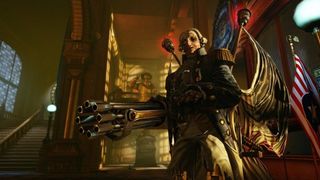
I'm glad the combat gets more interesting, but combat wasn't the most common complaint about BioShock – it was the ending. I ask Ken if he agrees that BioShock got less interesting after the Andrew Ryan encounter. “Yeah,” he says succinctly.
"The ending of the game is the most ambitious thing we've ever done, as a company."
I ask if they've learnt anything from it, hoping for a post mortem. Instead, he jumps straight to BioShock Infinite.
“I would say that the ending of the game is the most ambitious thing we've ever done, as a company. It is either going to be something incredibly wonderful, or people are going to burn down our office... So I can't tell you whether people will like it or not. I can tell you it is absolutely different to anything you've seen in a videogame.”
It's the sort of ridiculous thing Peter Molyneux would say. But after playing BioShock Infinite, after coming away with an experience I can't fully express, and after thinking back to the scene in Andrew Ryan's office in BioShock 1... I half believe it.
